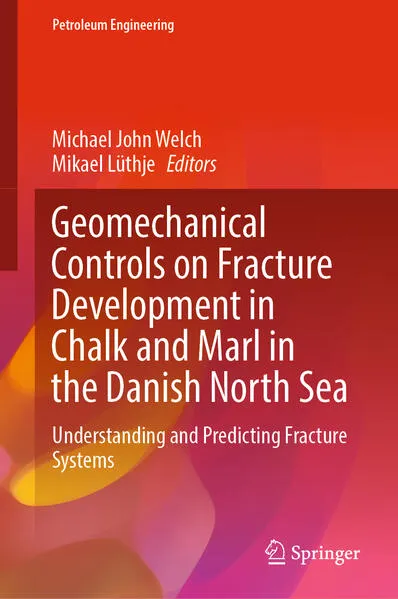
- Publikationen ca: 4
- Fragen & Antworten
Michael John Welch
- Geomechanische Kontrollen der Rissentwicklung in Kreide und Mergel in der dänischen Nordsee
- Geomechanical Controls on Fracture Development in Chalk and Marl in the Danish North Sea
Michael Welch, since completing his PhD at Birmingham University in 1997, has worked as an applied structural geologist in various consultancies and academic positions. His focus has always been on applied research in structural geology, developing new tools and techniques to solve specific problems, and working with industry to apply those techniques. This work has aimed to understanding and predicting the occurrence and effects of fractures and faults in the subsurface, originally in the hydrocarbon industry and more recently for carbon sequestration projects. He has presented much of this work in publications and international conference presentations.
Mikael Lüthje did his PhD at Cambridge University, University College London and Danish Technical University in geophysics and applied mathematics in 2005. Throughout his career, he has worked in academia, research and development, and the industry. His focus has, among others, been on fluid flow modelling in a range ofvarious media, including fractured reservoirs. Currently, his work and research is centered on carbon sequestration, deep geothermal and hydrogen storage, and deep learning techniques for geophysical applications.
Geomechanische Kontrollen der Rissentwicklung in Kreide und Mergel in der dänischen Nordsee
Dieses Buch fasst neue Entdeckungen zur Rissbildung in Kreide zusammen. Basierend auf Studien in der dänischen Nordsee zeigt das Buch, wie Beobachtungen von Aufschlussanaloga, Bohrkernen und seismischen Daten genutzt werden können, um die Dichte, Verteilung und Geometrie natürlicher Risse in Kreide und Mergel zu charakterisieren.
Geomechanische Kontrollen der Rissentwicklung in Kreide und Mergel in der dänischen Nordsee
Dieses Buch fasst neue Entdeckungen zur Rissbildung in Kreide zusammen. Basierend auf Studien in der dänischen Nordsee zeigt das Buch, wie Beobachtungen von Aufschlussanaloga, Bohrkernen und seismischen Daten genutzt werden können, um die Dichte, Verteilung und Geometrie natürlicher Risse in Kreide und Mergel zu charakterisieren.
Geomechanical Controls on Fracture Development in Chalk and Marl in the Danish North Sea
This book summarizes new discoveries on fracturing in chalk. Based on studies on the Danish North Sea, this book shows how observations from outcrop analogues, core and seismic data can be used to characterize the density, distribution and geometry of natural fractures in chalk and marl.
Geomechanical Controls on Fracture Development in Chalk and Marl in the Danish North Sea
This book summarizes new discoveries on fracturing in chalk. Based on studies on the Danish North Sea, this book shows how observations from outcrop analogues, core and seismic data can be used to characterize the density, distribution and geometry of natural fractures in chalk and marl.



